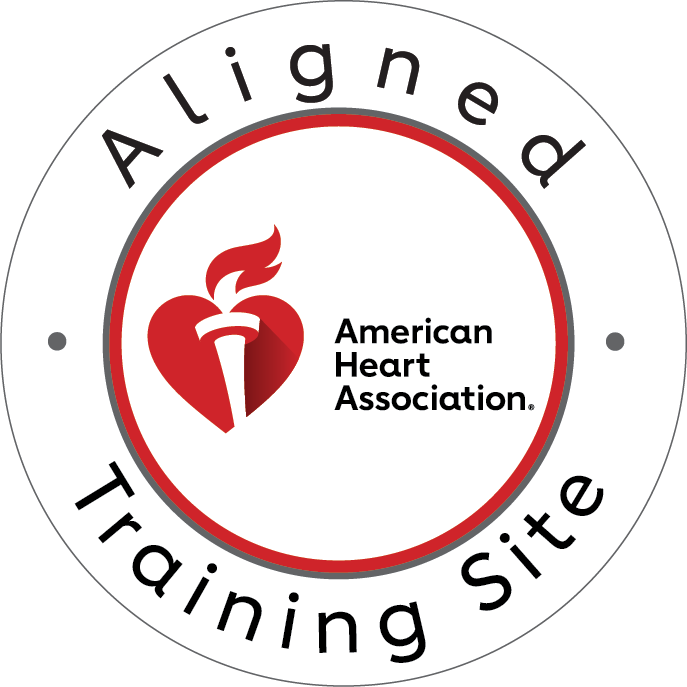Sudden cardiac arrest is one of the leading causes of death in the United States, claiming nearly 350,000 lives each year. In these high-stakes medical emergencies, the difference between life and death often comes down to mere minutes. That’s why recognizing the early warning signs of cardiac arrest and acting quickly are so crucial.
By understanding the subtle symptoms that can precede a cardiac emergency, bystanders and healthcare professionals alike can spring into action, initiating life-saving interventions before it’s too late. Whether it’s a coworker, a loved one, or a stranger, being able to identify the warning signs and respond accordingly can make all the difference.
Unfortunately, many people remain unaware of the telltale signs of an impending cardiac crisis. Mistaking these symptoms for something less serious, they fail to take the decisive steps that could ultimately save a life. This lack of knowledge and preparedness is a problem that healthcare providers must urgently address.
In this article, we’ll delve into the early warning signs of cardiac arrest, empowering readers with the critical information they need to recognize and respond to these life-threatening situations. By arming ourselves with this knowledge, we can transform from passive bystanders into active heroes, ready to spring into action when every second counts.
Understanding the Anatomy of Cardiac Arrest
To effectively identify the warning signs of cardiac arrest, it’s essential to first understand the underlying physiology of the heart and how it functions normally. The heart is a remarkable, four-chambered organ that acts as the body’s central pump, circulating oxygenated blood throughout the circulatory system.
At the core of the heart’s operation is a complex electrical system that coordinates the contraction and relaxation of the heart’s muscular walls. This intricate network of specialized cells, known as the cardiac conduction system, ensures that the heart’s chambers work in perfect synchrony, allowing it to efficiently pump blood with each beat.
However, when this delicate electrical balance is disrupted, the result can be catastrophic. Cardiac arrest occurs when the heart suddenly stops pumping effectively, often due to a malfunction in the cardiac conduction system. Without the heart’s rhythmic contractions, blood flow to the brain and other vital organs grinds to a halt, leading to rapid unconsciousness and, ultimately, death if immediate action is not taken.
Recognizing the Early Warning Signs
The key to saving lives in the face of cardiac arrest lies in identifying the early warning signs and responding swiftly. While cardiac emergencies can sometimes occur without any prior symptoms, several telltale signs may precede a cardiac arrest event, alerting bystanders and healthcare providers to the impending crisis.
One of the most common early warning signs of cardiac arrest is chest pain or discomfort. Individuals experiencing this symptom may describe a feeling of tightness, pressure, or squeezing in the chest, often radiating to the arm, neck, or jaw. This chest pain can be accompanied by shortness of breath, lightheadedness, or nausea.
Irregular or abnormal heart rhythms, known as arrhythmias, are another critical warning sign. Individuals may describe a fluttering sensation in the chest, a racing heartbeat, or even a sudden slowing of the heart rate. These irregularities in the heart’s electrical activity can be precursors to a full-blown cardiac arrest event.
Unexplained fatigue or weakness can also be an early indicator of an impending cardiac crisis. Individuals may report feeling unusually tired or physically drained, even after periods of rest. This symptom can be especially concerning when paired with other warning signs, such as chest discomfort or dizziness.
Recognizing these subtle, yet potentially life-threatening signs is crucial, as they can provide a critical window of opportunity for intervention. By understanding the early warning signs of cardiac arrest, bystanders and healthcare providers alike can be better equipped to spring into action, potentially saving lives in the process.
Differentiating Cardiac Arrest from a Heart Attack
While the cardiac arrest and heart attacks are closely related to medical emergencies, it’s important to understand the key distinctions between the two. Recognizing these differences can help ensure that individuals receive the appropriate immediate care and intervention.
At a high level, the primary distinction lies in the underlying cause of the event. A heart attack, also known as a myocardial infarction, occurs when there is a blockage in one or more of the coronary arteries, cutting off the blood supply to a portion of the heart muscle. This can lead to damage or death of the affected heart tissue.
In contrast, cardiac arrest is the result of an electrical malfunction within the heart, causing it to stop pumping effectively. This disruption in the heart’s normal rhythm, known as an arrhythmia, leads to a sudden loss of blood flow to the brain and other vital organs.
The symptoms of a heart attack and cardiac arrest can also vary, though there is some overlap. Chest pain, shortness of breath, and nausea are common to both conditions. However, individuals experiencing a heart attack may also report symptoms like cold sweats, jaw or arm pain, and a sense of impending doom.
In a cardiac arrest scenario, the individual may suddenly collapse and become unresponsive, with no detectable pulse or breathing. This rapid loss of consciousness is a critical warning sign that immediate action is required.
Understanding these distinctions is essential, as the appropriate emergency response for each condition differs. For a heart attack, the priority is to restore blood flow to the affected part of the heart, often through the use of clot-dissolving medications or percutaneous coronary intervention. In the case of cardiac arrest, the immediate focus must be on restoring the heart’s normal rhythm through cardiopulmonary resuscitation (CPR) and defibrillation.
By recognizing the unique characteristics of these two life-threatening events, bystanders and healthcare providers can respond more effectively, increasing the chances of survival and positive outcomes for the individuals involved.
Acting Quickly: The Critical First Steps
When faced with a potential cardiac emergency, time is of the essence. The sooner life-saving interventions can be initiated, the better the chances of survival and recovery. That’s why both bystanders and healthcare professionals must be prepared to act swiftly and decisively.
The first critical step is to call emergency services immediately. Whether it’s 9-1-1 in the United States or the local emergency number, alerting the appropriate authorities sets the rescue process in motion, dispatching trained medical personnel and emergency equipment to the scene.
Concurrently, if the individual is unresponsive and not breathing normally, the next step is to begin hands-only CPR. This technique, which involves rapid, forceful chest compressions, can help maintain blood flow to the brain and other vital organs until more advanced medical care arrives.
Locating and using an automated external defibrillator (AED) is also a crucial step in the response to cardiac arrest. These portable devices can analyze the heart’s rhythm and deliver a controlled electrical shock, known as defibrillation, to restore a normal heartbeat. Many public places, such as airports, shopping malls, and sports facilities, now have AEDs readily available for use by trained bystanders.
Performing these life-saving actions quickly and effectively can mean the difference between life and death. By mastering the critical first steps in a cardiac emergency, bystanders and healthcare providers alike can transform from passive observers into active heroes, ready to spring into action when every second counts.
Empowering Bystanders to Intervene
One of the greatest challenges in addressing the high rates of cardiac arrest-related deaths is overcoming the reluctance of bystanders to take action. Many people, despite having the best of intentions, hesitate to provide immediate assistance due to a lack of knowledge, training, or confidence in their abilities.
This is where Heartsaver training from the American Heart Association (AHA) plays a crucial role. Designed to equip individuals with the skills and mindset to respond effectively to medical emergencies, Heartsaver courses empower bystanders to take life-saving steps in the face of cardiac arrest.
Through comprehensive instruction in hands-only CPR, AED operation, and other first aid techniques, Heartsaver training gives participants the practical knowledge and hands-only experience they need to take decisive action. By demystifying the process and building confidence, this training helps overcome the common barriers that prevent bystanders from intervening.
Moreover, Heartsaver certification instills a sense of civic duty and personal responsibility in participants. Graduates of the program understand that they have the power to make a difference and that their actions can truly mean the difference between life and death. This mindset shift is essential in transforming passive bystanders into engaged, empowered responders.
The impact of this training is evident in real-world scenarios. Studies have shown that bystander CPR when performed correctly, can significantly improve the chances of survival for cardiac arrest victims. Similarly, the prompt use of an AED by a trained bystander can double or even triple the victim’s likelihood of surviving the event.
By promoting widespread Heartsaver training, healthcare organizations and community leaders can cultivate a network of prepared, responsive citizens who are ready to spring into action when a cardiac emergency strikes. This comprehensive approach not only saves lives at the moment but also fosters a culture of preparedness that can have far-reaching, positive implications for public health and safety.
Conclusion
Sudden cardiac arrest is a devastating medical emergency that claims hundreds of thousands of lives each year. However, by understanding the early warning signs and acting quickly, we can turn the tide and improve survival rates in these high-stakes situations.
Whether you’re a healthcare professional, a concerned citizen, or someone simply looking to be prepared, mastering the skills to recognize and respond to cardiac arrest is a vital responsibility. By arming yourself with the knowledge and techniques taught in Heartsaver training, you can transform from a passive bystander into an empowered, life-saving hero.
Remember, the signs of an impending cardiac crisis can be subtle, but the consequences of inaction are dire. Chest pain, irregular heartbeats, and unexplained fatigue may all be indicators of a looming emergency. Don’t hesitate – trust your instincts, call for help, and be ready to initiate hands-only CPR and use an AED if necessary.
By working together to spread awareness and promote widespread Heartsaver training, we can create a safer, more resilient community. So, take the first step today and contact CPR Indianapolis, an American Heart Association training site, to get the lifesaving skills you need to be prepared for any cardiac emergency.
Remember, every second counts when it comes to saving a life. Be the hero that makes the difference.
Contact CPR Indianapolis today to enroll in Heartsaver training and become empowered to recognize and respond to the early warning signs of cardiac arrest.




